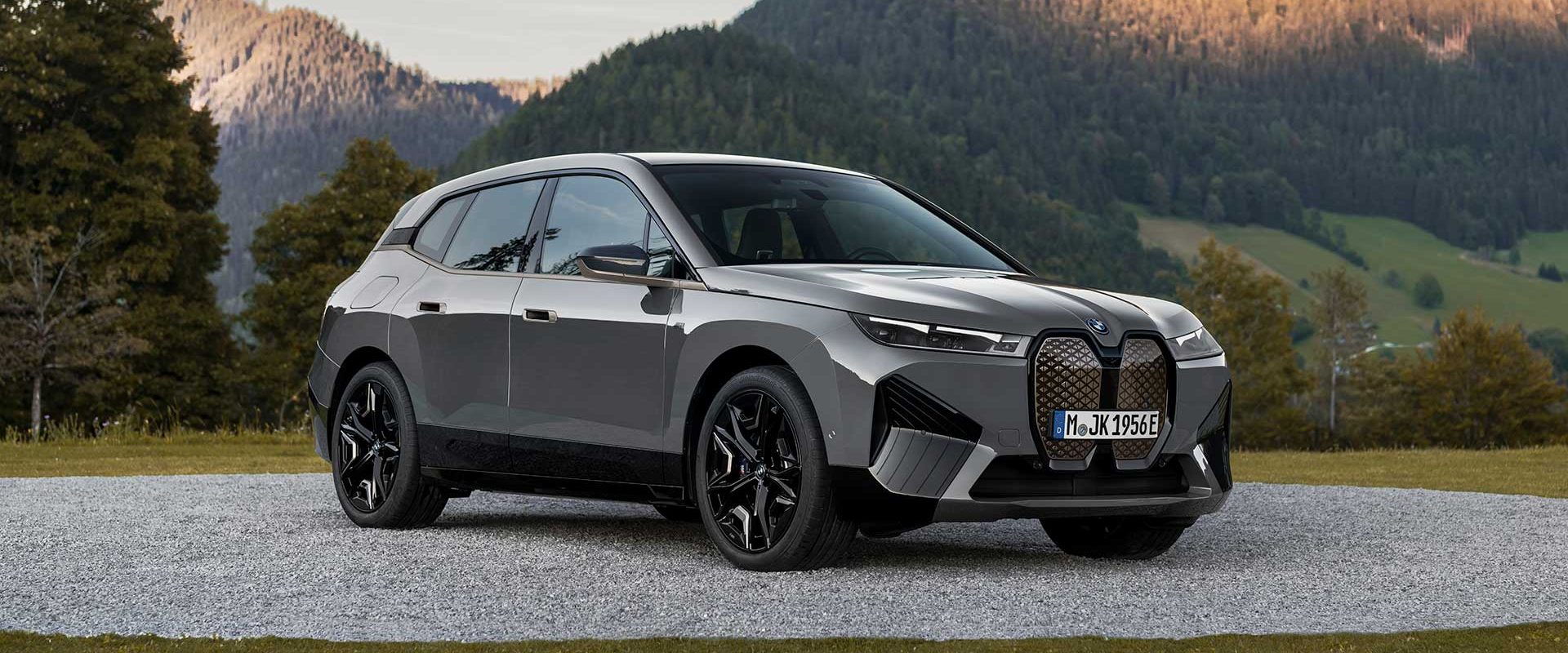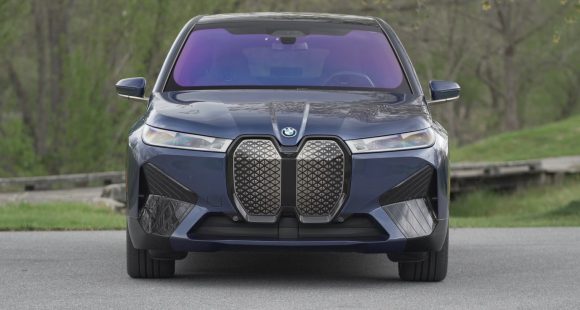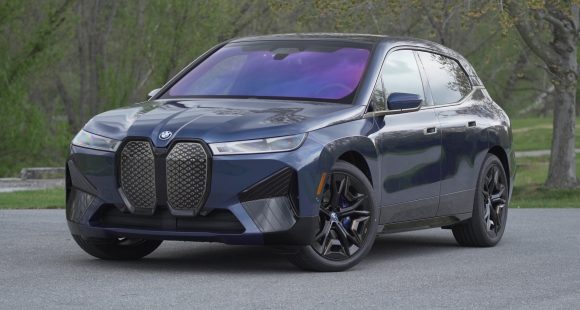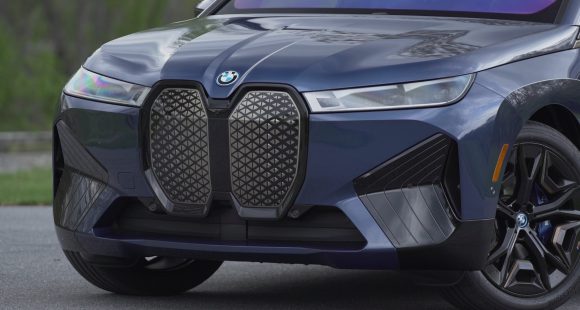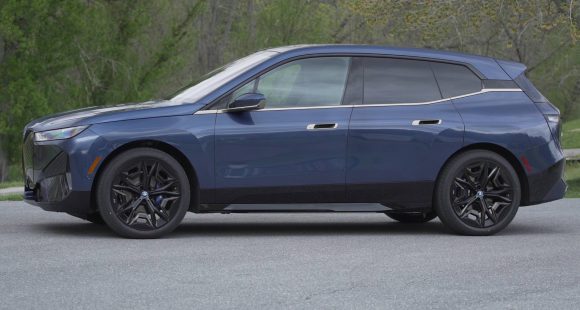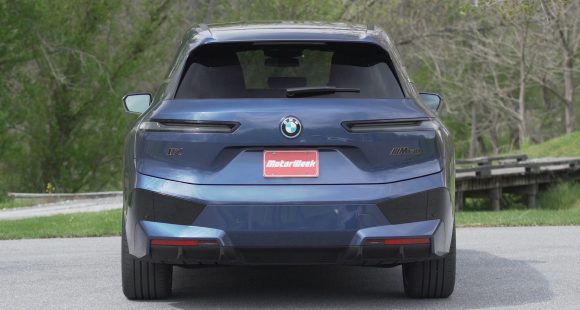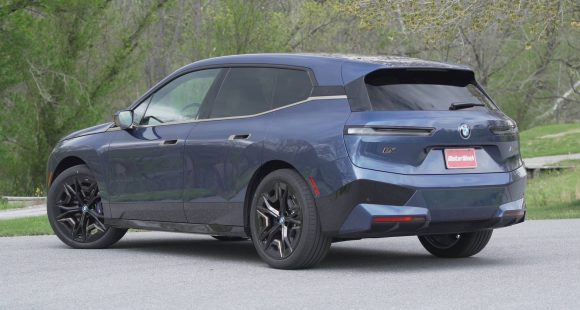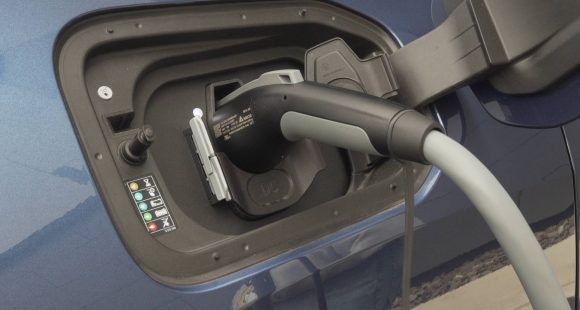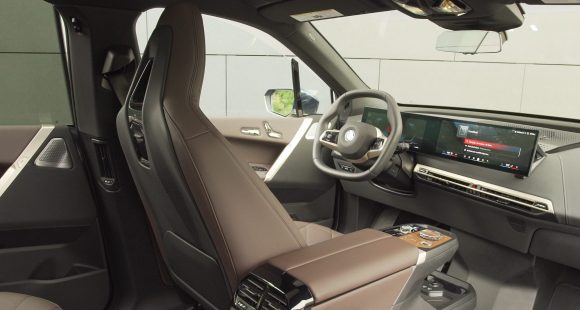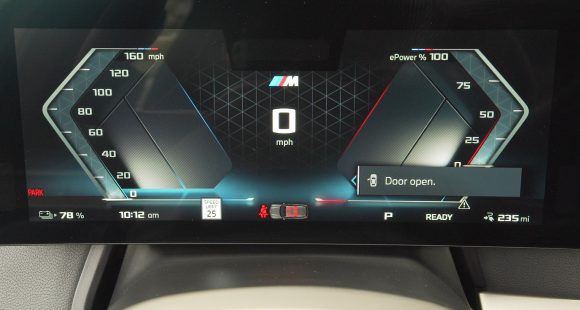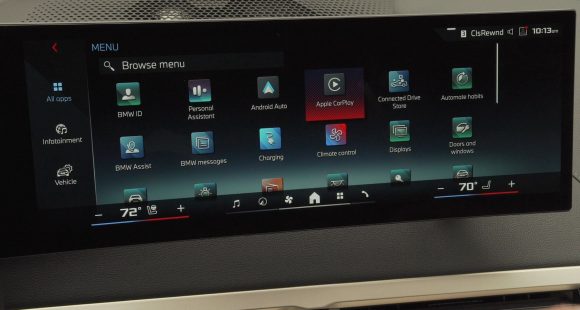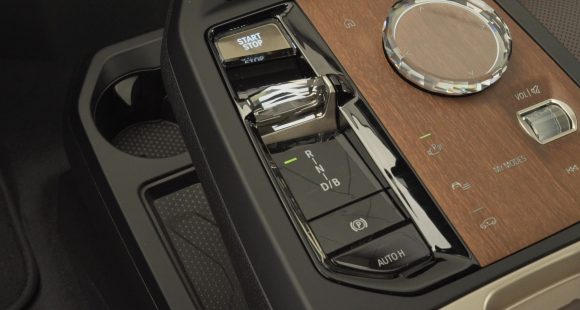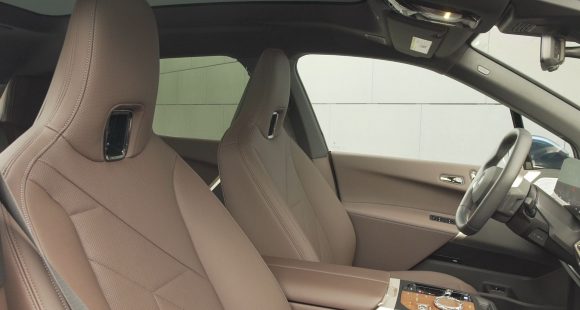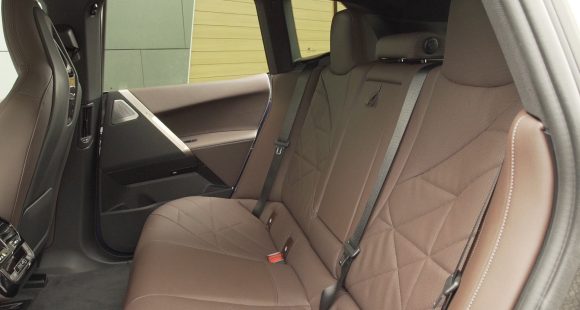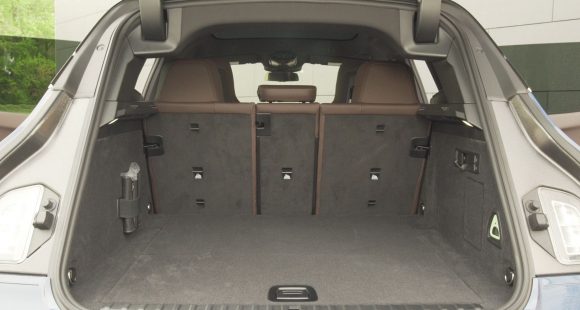2016 Mazda MX-5
For as long as we’ve been testing cars, we’ve yet to come across one that brings as much pure driving joy for the dollar spent as the Mazda Miata roadster. And even though it’s now officially the MX-5, and more and more sophistication has crept into the design over three generations, the all-new 4th gen, 2016 MX-5 keeps the good times rollin’.
It’s hard not to have a good time behind the wheel of the 2016 Mazda MX-5. As while this 4th iteration roadster may no longer look as far back, or be as basic, the pure sports car spirit of the original 1990 Miata is fully intact.
Like most recent Mazda’s, a significant effort is made to take the weight out, despite adding in more creature comforts. Weight is down 150-lbs. to 2,332.
And as before, there’s just enough go from the engine to make things fun, though now it’s the SKYACTIV-G 2.0-liter I4 at 155-horsepower and 148 lb-ft. of torque. A 6-speed manual transmission is standard, and it feels just as good as we remember. A 6-speed auto is available as well, but please only if you must.
At our test track, the MX-5 hops off the line better than ever. And while it’s easy to pine for more power, we’re actually quite happy with the engine’s output. It took 6.8–seconds to reach 60 on a slick track, and 15.4 to complete the ¼ at 89 miles-per-hour.
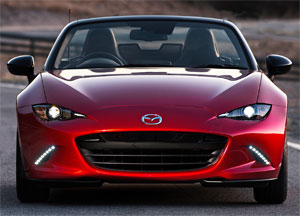 When it comes to cone work, the first thing you notice is the new electric power steering. Turn in is still razor sharp and precise, there’s just a very light feel to it now, maybe too light. The car itself however, feels far more solid overall. Still, it’s just as entertaining as ever tossing it around with playful amounts of oversteer.
When it comes to cone work, the first thing you notice is the new electric power steering. Turn in is still razor sharp and precise, there’s just a very light feel to it now, maybe too light. The car itself however, feels far more solid overall. Still, it’s just as entertaining as ever tossing it around with playful amounts of oversteer.
The suspension remains double-wishbone front and multilink rear, but this time around, Club trim includes the sport suspension with Bilstein dampers and a shock tower brace; as well as a limited slip rear.
Averaging 60 MPH stopping distance of just 111–feet means the braking is done with the same no-nonsense efficiency as the rest of the car.
The leaner, meaner MX-5 has a much more modern look of course. It also sits lower, and is a hair wider.
The face is still friendly, but the rest of the car is a little edgier, almost BMW-like, with its Euro-esque sculpted rear. Both head and tail lights are full LEDs with LED DRLs of course.
Club trim adds a sharper-looking front air dam and black side mirrors; while the Brembo/BBS package really spices things up with painted calipers, side sill extensions, rear bumper skirt, and of course 17-inch forged BBS wheels.
True to tradition, a manual soft top is standard, folding and latching easily right from the driver’s seat. No word yet on whether an optional hardtop will return.
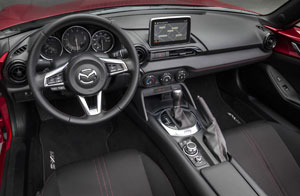 Inside, available features abound, fully displayed here in Club trim, like a dash top 7-inch screen. Touch controls are limited to when you’re sitting still. This Commander Controller is use when moving. Push button start is standard. But the remainder of the interior, from round air vents to big analog gauges is as clean and simple as ever.
Inside, available features abound, fully displayed here in Club trim, like a dash top 7-inch screen. Touch controls are limited to when you’re sitting still. This Commander Controller is use when moving. Push button start is standard. But the remainder of the interior, from round air vents to big analog gauges is as clean and simple as ever.
Most importantly, the shifter falls readily to hand as always, and we quickly felt right at home. More comfortable seats with extra adjustments are always welcome, and they still hold you tight as well.
As for complaints, we understand the need of the Commander Controller, but its console placement is too far back for easy use, and we could use a little more girth to the steering wheel.
Mazda says that the MX-5’s trunk is smaller, but we actually found it more useful than before.
Government Fuel Economy Ratings for the manual are 27-City, 34-Highway, and 30-Combined. Even better are the numbers for the automatic at 27-City, 36-Highway, and 30-Combined. And they both share a great Energy Impact Score of 11.0-barrels of oil used and 4.9-tons of CO2 emissions per year.
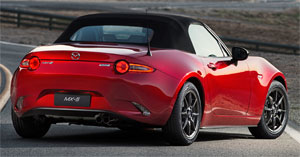 Prices have increased, now starting at $25,735 for Sport trim; this Club, at $29,420, and top shelf Grand Touring at $30,885. Still, no one else offers this much roadster fun for the dollar.
Prices have increased, now starting at $25,735 for Sport trim; this Club, at $29,420, and top shelf Grand Touring at $30,885. Still, no one else offers this much roadster fun for the dollar.
So, back to where we started. Even with all the improvements, Mazda has not compromised that great Miata persona. The 2016 Mazda MX-5 does indeed deliver a lot more than just sports car basics, but those basics are still what this little roadster gets exactly right.
Specifications
- Engine: 2.0 liter I4
- Horsepower: 155
- Torque: 148 lb-ft.
- 0-60 mph: 6.8 seconds
- 1/4 mile: 15.4 seconds @ 89 mph
- EPA: 27 mpg city/ 34 mpg highway
- Energy Impact: 11.0 barrels of oil/yr
- CO2 Emissions: 4.9 tons/yr
2024 BMW iX M60
Still Quirky, But A Whole Lot Faster!
While many BMW EVs are virtually identical to their ICE counterparts, when it comes to their iX utility vehicle, well, that’s its own unique animal, especially when it comes to this 610-horsepower M60. And now we get a chance to see if we can tame it.
High-performance SUVs are nothing new to BMW, so when their all-electric iX utility debuted for 2022, it didn’t take long for them to inject a little M performance into it. And while we did get some early seat time in the iX M60, this 2024 version is the first time we’ve been able to give it a complete test.
A refresher on the details, the M60 uses a dual motor arrangement; the front motor putting out 255 horsepower, the rear motor almost twice as much. Combined, they whip up 610 horsepower and 811 lb-ft of torque, which we couldn’t wait to exploit at our test track.
xBMW’s electric motors are built in-house, and are unique from most as they use electric pulses to trigger the rotors instead of magnets. This comes into play most obviously in the rear motor where its immediate power delivery somehow seems even more immediate than most. Absolutely zero drop-off in power throughout the quarter-mile, with our best time an 11.7 at 119 mph.
While handling is BMW’s forte regardless of powertrain or vehicle segment, we could feel a little more weight transfer here in the M60, compared to the xDrive50. That’s despite the four-corner air suspension with automatic level control getting some M-spec tuning.
We really had to keep inputs smooth to avoid a full shutdown from the stability system; there was also noticeable lag time between when we initiated turn-ins and when those commands were actually carried out. All of this made more difficult by the iX’s goofy-shaped steering wheel and front seats that feel more like a recliners than sport seats. Brakes felt mostly the same as in the xDrive50: Very little nose dive, good feedback, and consistent drama-free stops from 60 in just 102 feet.
On the street, it feels incredibly fast, bordering on outrageously quick.
So, while it’s still a bit of a mixed bag when it comes to driving on the track, on the street, it feels incredibly fast, bordering on outrageously quick. Meaning you better be prepared for the fury that’s about to be unleashed if you go full in on the accelerator.
And even with all of the performance, and using the same 111.5-kWh battery, the M60 still delivers great range of 296 miles, just 11 fewer than xDrive50. Max charging rate of 250 kW will get you to 80% in 35 minutes.
Whether it’s that steering wheel, the minimal dash with the sweeping digital cockpit display, the center console’s wood and glass controls, heating elements in the armrests, gesture control, or the Panoramic Sky Lounge LED sunroof that frosts over at the touch of a button, it’s all kind of a “far out” experience in the cabin. But also, a very roomy one with almost an open floor plan up front, and lots of space and features for rear seat passengers. Capacity in the cargo area is 35.5 cubic-feet; folding seatbacks can expand the space to 77.9 cubic-feet.
Similar in size to the X5, the iX is built on a unique spaceframe architecture made up of a combination of carbon-fiber, high-strength steel and aluminum, an evolution of what they started back in 2014 with the i3, their first EV. Unique elements for the M60 include blue brake calipers, adaptive LED laserlight headlights, and 21-inch wheels which can be upgraded to these 22-inch M two-tone alloys. It’s not the most beautiful BMW we’ve seen lately, but it sure is unique, and everyone will know it’s not your typical BMW.
Using 42 kWh of energy per 100 miles, the M60 earns a fair efficiency rating. Considering base pricing for the xDrive50 starts at $88,095, the step up to the M60 is a significant one at $112,495.
Admittedly, we weren’t completely enamored with the original iX; great EV, it was just a little too much off-brand for us. It still has its quirks; but after injecting a whole lot more BMW into this 2024 BMW iX M60, now that seems much more like it!
Specifications
As Tested
- Motor Setup: Dual Motor
- Battery Size: 111.5-kWh
- Horsepower: 610
- Torque: 811 lb-ft.
- EV Range: up to 296 miles
- 0-60 mph: 3.5 seconds
- 1/4 Mile: 11.7 seconds at 119 mph
- Braking, 60-0 (avg): 102 feet
- Max Charging Rate: 250-kW
- Efficiency: 42-kWh / 100 miles







